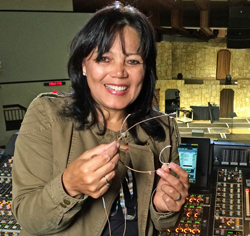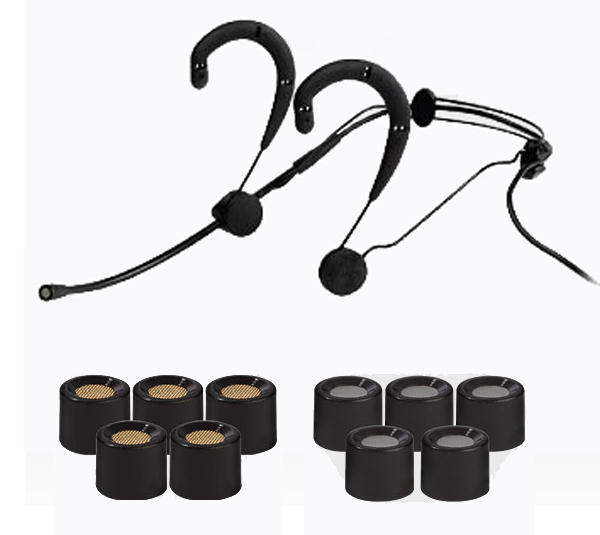
How Sensitive
To generate enough signal level from a miniscule diaphragm, these mics are invariably back-electret condenser types rather than dynamics. We can still find larger dynamic capsules on a handful of legacy headsets, such as the A-T PRO 8HEx; in contrast, the company’s recent BP-892c MicroSet headset incorporates a tiny 2.8 mm condenser with a sensitivity of -49 dB.
To accommodate different input source levels, ranging from subtle speaker to shouting, the Countryman H6 offers three sensitivity levels for its capsule: -43, -53, and -63 dB. The maximum SPL before distortion increases by 10 dB with each capsule.
DPA also offers headsets with varied sensitivities, with the 4066 at -44.5 dB and the 4067 at -60 dB. And Avlex Mipro has optional Red Dot adapters for its headsets, which provide a -15 dB pad for use with a variety of wireless beltpacks.
Design Factors
Many of these mic elements are so tiny that a handful of them can be hidden under a quarter. Given their diminutive size, I was curious about how they work so well, and so I asked Chris Countryman about it.

He began by noting that a well-designed mic produces a very flat, wideband frequency response – the process starting with making a diaphragm’s membrane “like a drum head,” and having a primary resonance “based on its stiffness and the damping provided by porting and the internal volume of air.”
Careful port design and internal layout are critical in controlling additional resonances so that response remains flat over the full frequency range, while tiny holes in the diaphragm or back plate provide pressure equalization and also control low-frequency roll-off.
Chris Countryman adds that lowering the mass of the diaphragm reduces membrane inertia and directly improves transient response and settling time. “Moving to a miniature size means that many of the tightest tolerance structures can be fabricated in one piece using precision etching techniques,” he states, also pointing out that high-quality electronic components with tight tolerances play a significant part as well.
Single Or Dual Ear
Headsets need to stay firmly in place while the performer moves, sometimes with great enthusiasm, with the mic element pointed optimally at the mouth. Both single- and dual-ear headsets offer a variety of mechanical solutions to permit stability along with the adjustability to fit all sizes of heads and position the mic where it’s needed.
Dual-ear headsets wrap around the back of the head/neck and hang over both ears, creating a platform for the mic boom. Earlier attempts at this were often uncomfortable, but more recent advances in both materials and design have made many of them fit well while being visually undetectable.
Point Source Audio Series 8 headsets, available in both omni and directional versions, have a lightweight frame with earpieces that rotate at 90-degree intervals and lock in place so that the boom can be placed on either side of the face, and they can also be stored flat in a case. The Countryman H6 adjusts for head size with earpieces that smoothly telescope into the sleek frame.

